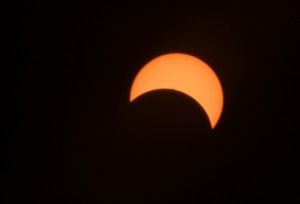Corporate welfare recipient; righteous challenger of the transportation paradigm; exploiter of groveling politicians; source of “the most important factory to be built on this continent in our lifetimes”—all views of Tesla posted on one Las Vegas Sun story about the company’s decision to base its $5 billion battery plant in Nevada.
That was before the lid came off the number soup, from the estimated $1.25 billion tax break Tesla stands to get over 20 years to the projected $100 billion impact and more than 22,000 jobs it could bring to our economy in that time frame if Gov. Brian Sandoval sees his rosiest vision manifest. By the time this article prints, it’s likely that the Nevada Legislature will have decided whether to approve the incentive package that helped the state beat out four others for Elon Musk’s favor. As his electric cars are built in California and need lithium power, Nevada’s location and active lithium mine were big draws, and Musk insisted the tax bennies weren’t the biggest offered. Even so, the scope is historic in the state and among the country’s top 10 government “mega-deals,” per a Sun report. As USA Today framed it: “Tesla will operate in the state essentially tax free for 10 years.”
You could see the abatements and credits—ranging from property tax exemptions to electricity discounts—as revenue lost to fundamentals like schools or sewers, while taxpayers are simultaneously on the hook for government services necessitated by the “Gigafactory,” like a roadway connecting the industrial center to the outside world. Or you could see the deal as an investment in the future of Nevada industry, Tesla being the subsidized anchor store drawing other promising endeavors to the high-tech mall.
Stephen Brown, director of the Center for Business and Economic Research at UNLV, saw that analogy play out while teaching in Texas. Government incentives lured pivotal tech firms like Apple to Austin, which drew others. With pumped-up funding for related higher ed programs, the effort helped turn the city into “Silicon Prairie.” With that kind of reputation, Brown says you can attract key players with fewer incentives. “You’re hoping to get this idea launch, that Nevada is part of a high-tech industry … It’s a gamble, but it’s a good investment if more happens than simply, we get a battery factory.”
And the gamble has contingencies, “clawbacks” requiring Tesla to invest in the state and hit certain benchmarks in order to tap all $1.25 billion. Brown points out that if you break the amount down over 20 years (especially with depreciation), it isn’t that staggering—$62.5 million a year, less than half of 1 percent of state and local tax revenue in Nevada. “What we’re doing is putting in a little bit of money but hoping to hit it big.”
Tesla is an exciting company, but it may not sell many cars in the long run, or attract many peers to Northern Nevada. “Knowledge workers” may not flock to pioneer the Silicon Desert. Brown says it might be a decade before we know if the gamble is paying off, if Tesla will be a crucial spark or just a logo on a really big building. –Erin Ryan
Who’s the biggest employer in Nevada?
The news about Tesla’s upcoming Nevada “Gigafactory”—and the estimated 6,500 people it will employ—is big. But just how does that stat stack up to other major employers in the state?
1,574 Zappos
4,000 Barrick Gold Corporation
7,500 Aria
8,100 Bellagio
8,500 MGM Grand
15,455 McCarran International Airport
35,000 Clark County School District
52,700 MGM Resorts International (total employees on the Las Vegas Strip) -Ken Miller






